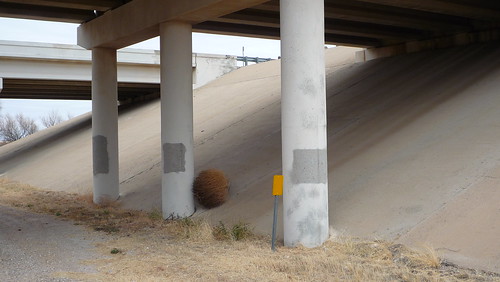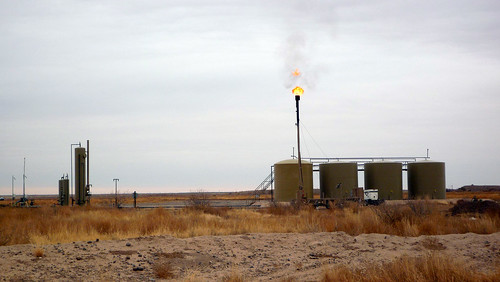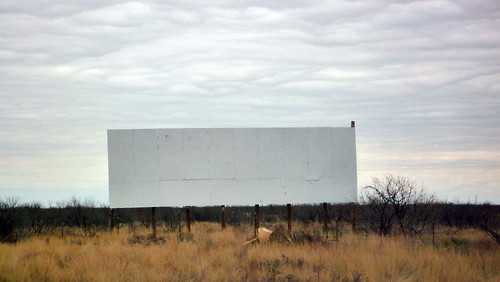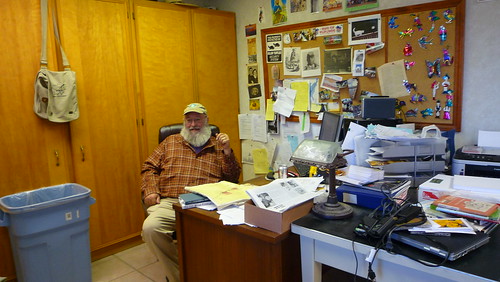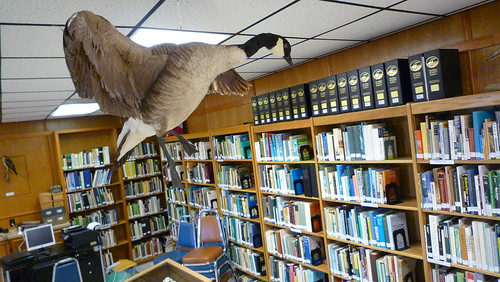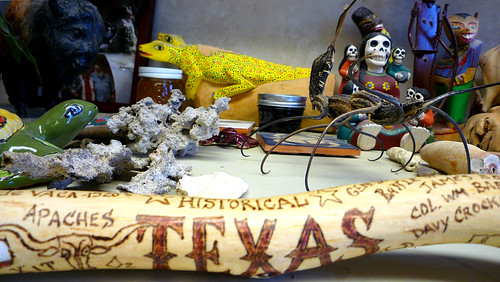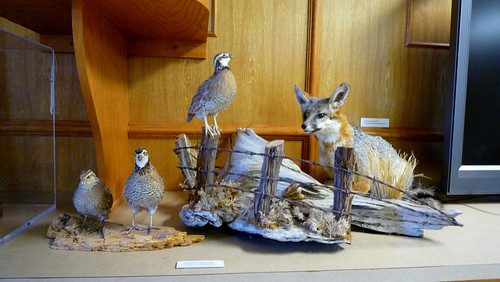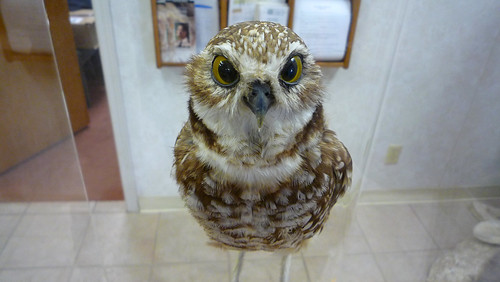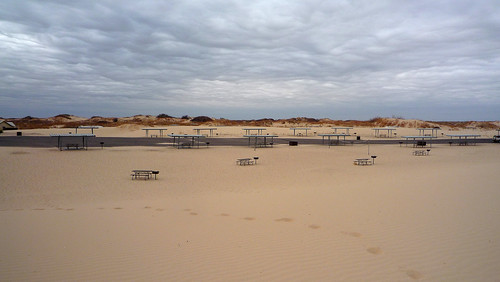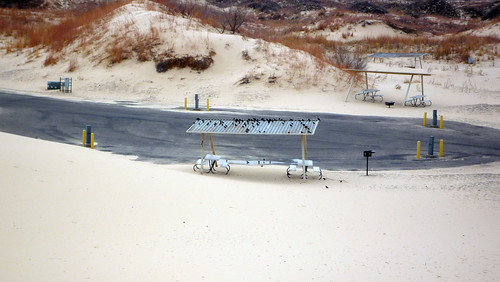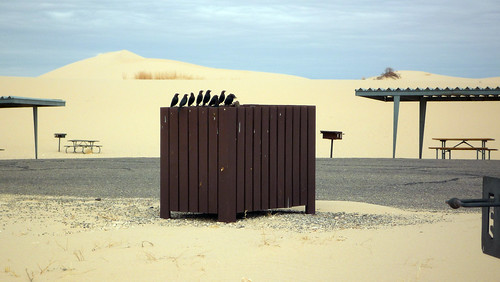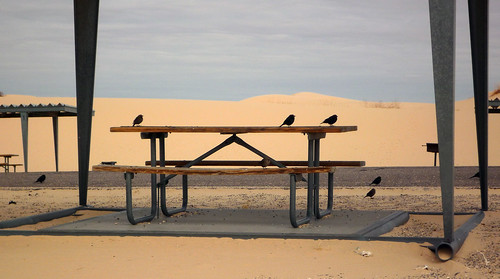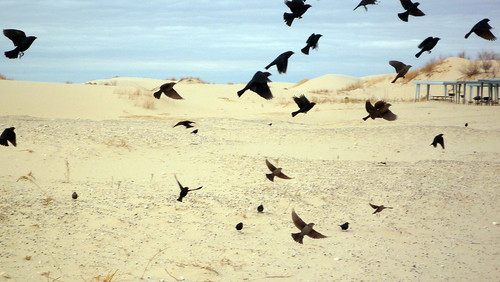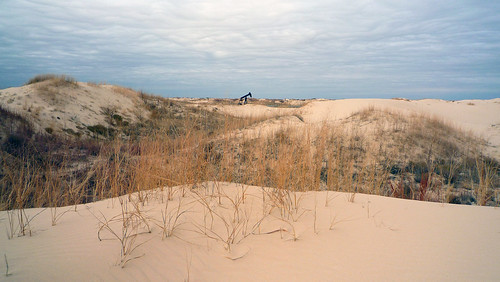Jan 12. Sea change coming north to Midland. The land flattens, and if you aren’t careful you’ll say it all looks the same, and empty. Yellow grass. Blue sky. Black mesquite trees (shrub-sized) that look charred against the grasses. All these dinosaurs of equipment lying around too. And corrugated metal sheds. Midland is all business. Until sunset, when you bathe in the light of West Texas, whatever your circumstance.
The Permian Basin is 250 million yrs old, and underlies the later formation of the Southern High Plains — the Llano Estacado. It’s a tilting plateau that is well demarcated by escarpments and a river, and blurring on the southeast end into the next ecosystem of the Edwards Plateau. It’s short grass prairie, high altitude. And in between the oil and the top soil is the Oglalla Aquifer, the largest body of underground water on the continent. The Permian basins were formed and then filled in as the huge inland sea dried out, along with the mass extinction was a lot of salt amid the critters we now use as oil. Below/above. It’s a delicate place, a place in between a lot of other places and subject to extreme changes in weather, surface water, and fortunes seem to play much the same way, made and broken (the dust bowl, droughts, oil booms and busts).
I’m trying to pay attention to the tensions here – oil/water/land, permeable/solid, brief time/deep time.
Burr Williams called the Llano one vast ecotone . In my estimation, that’s as interesting as a mesocosm. Burr Williams is the director of Sibley Nature Center, dedicated to all things Llano Estacado, training an army of local citizen naturalists, exemplary in the deep study of a very site-specific ecosystem, and by extension, a model at understanding networks, and the networks of networks that make up the world we are enmeshed in. The Center is a dream, full of books, exhibits, and loads of taxidermy, it’s at once polished and handmade, exceptions are the rule. Its idiosyncrasies make it magical. I think Burr’s collection of Day of the Dead sculptures is as telling as the beehive installed behind glass embedded in the wall, or the fecund library. I get the feeling Burr is as enthused by a new niche created by sewage effluvient as an ancient fossil, an unspoiled salina. Nature abhors a vacuum, he said. Sibley’s teaching program about the Llano is years-long, and includes cultures, history, and interferences as well as things we think of as natural or native.
Here are a few examples of writings from Sibley Nature Center:
The Texon Scar
The Ecology of Oil Well Pads
Behaviors of Animals in Our Area
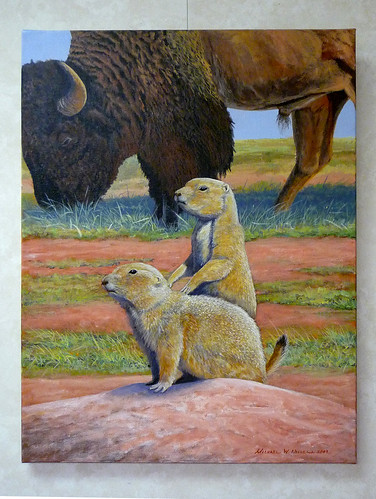
Monahans Sand Hills Park. I went on the way into Odessa. The park is a tiny gem, and in winter, empty of all but two long-term caravaners with lapdogs in jackets. It has a very Richard Misrach desert vibe. Within the larger Llano, there are these micropockets of sand dunes, aided by tenacious plants that hold much of them together while the nude bits of silky fine sand are moving forms, alive with birds, and abundant animal tracks. I loved how the blackbirds were running the camping area. There’s oil in them thar sands, too.
Jan 13. A large circle was driven from Midland to Kermit to Wink to Wickett and back through Monahans at Golden Hour. $25 dollars in gas. It’s far more efficient to stay home, but then you continue to think you know what you’re talking about.
2 panoramas from the sand hills:
![]()
more pics at flickr.

